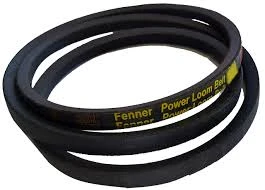- Arabic
- French
- Russian
- Spanish
- Portuguese
- Turkish
- Armenian
- English
- Albanian
- Amharic
- Azerbaijani
- Basque
- Belarusian
- Bengali
- Bosnian
- Bulgarian
- Catalan
- Cebuano
- Corsican
- Croatian
- Czech
- Danish
- Dutch
- Afrikaans
- Esperanto
- Estonian
- Finnish
- Frisian
- Galician
- Georgian
- German
- Greek
- Gujarati
- Haitian Creole
- hausa
- hawaiian
- Hebrew
- Hindi
- Miao
- Hungarian
- Icelandic
- igbo
- Indonesian
- irish
- Italian
- Japanese
- Javanese
- Kannada
- kazakh
- Khmer
- Rwandese
- Korean
- Kurdish
- Kyrgyz
- Lao
- Latin
- Latvian
- Lithuanian
- Luxembourgish
- Macedonian
- Malgashi
- Malay
- Malayalam
- Maltese
- Maori
- Marathi
- Mongolian
- Myanmar
- Nepali
- Norwegian
- Norwegian
- Occitan
- Pashto
- Persian
- Polish
- Punjabi
- Romanian
- Samoan
- Scottish Gaelic
- Serbian
- Sesotho
- Shona
- Sindhi
- Sinhala
- Slovak
- Slovenian
- Somali
- Sundanese
- Swahili
- Swedish
- Tagalog
- Tajik
- Tamil
- Tatar
- Telugu
- Thai
- Turkmen
- Ukrainian
- Urdu
- Uighur
- Uzbek
- Vietnamese
- Welsh
- Bantu
- Yiddish
- Yoruba
- Zulu
9월 . 04, 2024 15:52 Back to list
High-Quality Belts for Cummins Engines - Durable & Reliable Performance
Understanding Belts for Cummins Engines Essential Components for Optimal Performance
When it comes to the performance and longevity of Cummins engines, one aspect that is often overlooked is the belts that drive various accessories. Whether in commercial trucks, heavy machinery, or marine applications, these belts play a crucial role in ensuring everything operates smoothly. In this article, we'll explore the various types of belts used in Cummins engines, their importance, and maintenance tips to keep them in prime condition.
Types of Belts in Cummins Engines
1. Serpentine Belts Most modern Cummins engines utilize a serpentine belt system. This single, continuous belt drives multiple accessories such as the alternator, water pump, and air conditioning compressor. Serpentine belts are favored for their efficiency and ease of installation compared to older systems that used multiple belts.
2. V-Belts Some older Cummins models might still use V-belts, which are designed to fit into a groove on the pulley. These belts are typically used to drive specific accessories rather than multiple components and are more common in older equipment.
3. Timing Belts While not used in all Cummins engines, those models that require them will have a timing belt responsible for synchronizing the rotation of the crankshaft and camshaft. This is crucial for maintaining engine timing and performance.
Importance of Belts in Engine Performance
Belts are critical for the functioning of an engine's accessories. For instance, the serpentine belt not only powers the alternator, which maintains the battery charge, but also drives the water pump to keep the engine cool. A malfunctioning belt can lead to overheating, battery failure, and even serious engine damage. Therefore, regular inspection and maintenance of these belts are necessary to ensure the overall health of the engine.
for cummins engine belt

Signs of Belt Wear and Tear
To prevent breakdowns and costly repairs, it's vital to be aware of signs that indicate belt wear. Common indicators include
- Squealing Noises A high-pitched squealing sound can signify that a belt is loose or worn out. - Cracks and Fraying A visual inspection may reveal cracks or fraying on the surfaces of the belts, indicating they need replacement. - Poor Performance of Accessories If accessories like the alternator or air conditioning system are failing to operate effectively, it may be due to a worn belt.
Maintenance Tips
1. Regular Inspections Schedule routine inspections of the belts during maintenance checks, looking for any visible signs of wear. 2. Proper Tension Ensure that belts are correctly tensioned, as both too tight and too loose conditions can lead to premature wear or failure.
3. Use Quality Parts Always opt for OEM (Original Equipment Manufacturer) belts or high-quality aftermarket alternatives to ensure a proper fit and function.
4. Replace Timely Set a replacement schedule for belts based on the manufacturer's recommendations, even if they appear to be in good condition.
In conclusion, belts are vital components in Cummins engines that should not be neglected. By understanding their function, recognizing signs of wear, and following proper maintenance practices, engine owners can ensure optimal performance and longevity of their engines. Whether you're operating a truck, generator, or any machinery fitted with a Cummins engine, taking care of these belts can save you time, money, and hassle in the long run.
-
Korean Auto Parts Timing Belt 24312-37500 For Hyundai/Kia
NewsMar.07,2025
-
7PK2300 90916-T2024 RIBBED BELT POLY V BELT PK BELT
NewsMar.07,2025
-
Chinese Auto Belt Factory 310-2M-22 For BMW/Mercedes-Benz
NewsMar.07,2025
-
Chinese Auto Belt Factory 310-2M-22 For BMW/Mercedes-Benz
NewsMar.07,2025
-
90916-02660 PK Belt 6PK1680 For Toyota
NewsMar.07,2025
-
drive belt serpentine belt
NewsMar.07,2025

